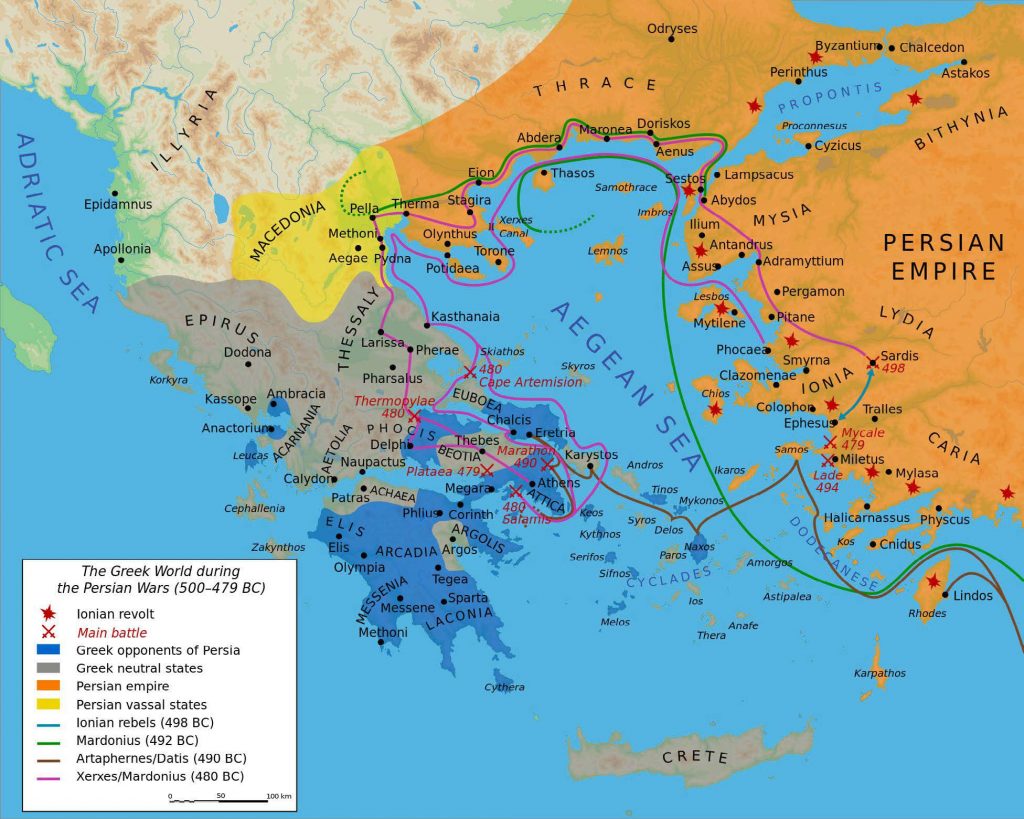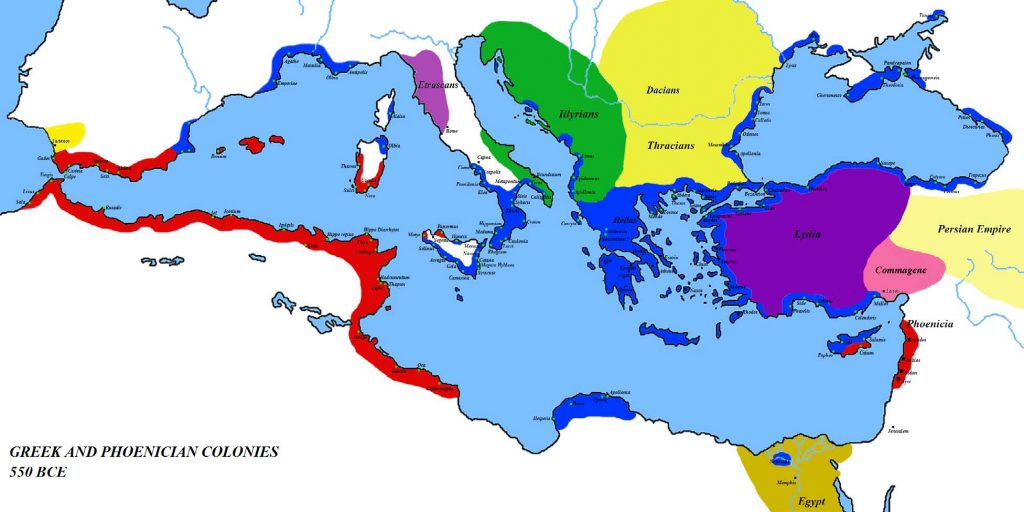Geography and Topography
This chapter’s title refers to the Greek World, rather than Greece. While Greece is a unified country today, the territory of the present-day country was not unified under one rule until the rise of the Macedonians in the fourth century BCE. Instead, the basic unit of organization in the period covered in this chapter was the polis, an independent city-state, which consisted of a walled city that controlled and protected the farmland around it. Historians estimate that close to 1,500 of these city-states dotted the ancient Greek landscape.
Each of these poleis (plural form of polis) possessed its own form of government, law-code, army, cults of patron gods, and overall culture that set it apart from the other city-states. While the two most famous poleis, Athens and Sparta, controlled vast territories of farmland, most city-states were quite small, with a population of just a few thousand citizens. Furthermore, the Greek world in antiquity encompassed much more than present-day Greece, extending as far as Italy in the West and the territories of modern-day Turkey and Ukraine in the East.
The geography and topography of the Greek mainland and the Mediterranean region surrounding it influenced the history of the Greek people in a number of crucial ways. First, the mountainousnature of mainland Greece, especially in the north, allowed different regions to remain somewhat isolated. The most isolated of all, Thessaly and Macedon, were viewed as uncivilized barbarians by the rest of the Greeks in the Archaic and Classical periods (one oft-mentioned example of their “barbarism” in Greek literature is that they drank their wine undiluted!)and largely kept to themselves until their rise to military prominence in the mid-fourth century BCE. The mountains throughout the northern portion of mainland Greece, in addition to isolating regions from each other and promoting regional culture, also provided tactical defenses in the face of external attacks. Most famously, the Persians learned the hard way about the challenges of navigating the Greek landscape during the second Persian invasion of Greece in 480 BCE. Indeed, the story of the 300 Spartans who fought to the death at the Battle of Thermopylae addresses the challenge of the Persian army trying to cross the mountains to the north of Attica in order to invade Athens by land.
The Isthmus, a narrow strip of land controlled by Corinth, played a similar role in separating mainland Greece from the large peninsula of the Peloponnese. An inland city in southern Peloponnese, Sparta conquered Messenia, its surrounding region, early in its history and extended political control over much of the peninsula by early fifth century BCE. Unless the interests of Sparta herself were directly involved, Sparta practiced a policy of isolation and limited military intervention in other city-states affairs and wars, a practice enabled due to Sparta’s far southern location in Peloponnese.

No less influential for the history of the Greek city-states than the topographical features were the resources that the land in different regions provided for agriculture and manufacturing. Mainland Greece was notoriously unsuitable for agriculture. Growing the grain staples wheat and barley in the rocky and clay-filled soil of Athens was especially difficult, while the mountainous regions across the entire mainland were optimal for herding, rather than agriculture. One notable exception, however, were olive trees, which grew abundantly. Olive oil, as a result, was ubiquitously used for eating, bathing, and lamps, and even as currency or prize for victors in athletic games. In addition, early on in their history, the inhabitants of Attica and Corinth found a way to profit from the clay in their soil by developing advanced ceramic pot-making and decorating techniques. Remains of Athenian and Corinthian wares have been found at archaeological sites all over the Mediterranean, attesting to their popularity abroad.
Finally, precious metals were in short supply in the mainland, but the few that were available had an impact on the history of their regions. Most famously, the discovery of the silver mines at Laurion in Attica contributed to the increased prosperity of Athens in the mid-fifth century BCE.
But the topography and geography of mainland Greece and the Peloponnese only tells us a part of the story. The Aegean is filled with islands, some of which remained autonomous, but most came under the control of the Athenian maritime empire in the fifth century BCE. In addition, the Greek colonization movement of the seventh and sixth centuries BCE resulted in the foundation of numerous Greek city-states in Asia Minor (modern-day Turkey), Magna Graecia (southern Italy), Sicily, and the Black Sea littoral.

The history of the Greek world from its earliest settlements to the Roman conquest, therefore, is inextricably tied together with the history of the Mediterranean as a whole. And since the Greek areas of influence overlapped with those controlled by the Phoenicians, Persians, and eventually the Romans, interactions, often warlike, were unavoidable as well. As the modern historians Peregrine Horden and Nicholas Purcell noted, the Mediterranean was “the Corrupting Sea”1 whose inhabitants were like frogs around the pond, watching each other, and borrowing each other’s cultural and technological achievements. As this chapter and the next will show, the Greeks and the Romans were the farthest-leaping frogs of all.

